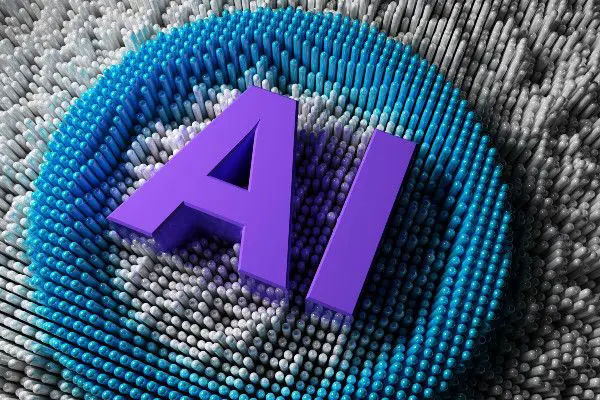Introduction
Artificial Intelligence (AI) has become a pivotal force in a multitude of industries, and one of its most impactful realms is Natural Language Processing (NLP). NLP, a facet of AI, seeks to enable computers to comprehend, respond, and interact using human language. It’s at the forefront of bridging the communication gap between humans and machines, paving the way for more natural and intuitive user interfaces.
Over the years, advancements in AI have dramatically enhanced NLP’s capabilities. The rise of machine learning and deep learning algorithms have allowed systems to grasp the context, sentiment, and intent behind the human language, thereby understanding and replicating human language like never before. This blog post delves into the pivotal role of AI in NLP, how it’s shaping the future of language understanding, its intersection with machine translation, its contribution to sentiment analysis, and its revolutionary combination with Natural Language Generation (NLG).
Artificial Intelligence and Deep Learning with Python
Are you wearied by deep learning resources that don’t clarify every single line of code? “Artificial Intelligence and Deep Learning with Python” revolutionizes the way deep learning, AI, and Python are introduced to beginners. The author draws an insightful analogy, equating a computer language with any other language, asserting that understanding every component of a sentence or a line of code is vital to generate novel ones. Unlike other resources claiming to be for “beginners”, this book stands out by dissecting and explaining every line of code.
There’s nothing more perplexing than encountering an unexplained line of code after an initially well-explained one. This book ensures a seamless learning journey with comprehensive explanations for each line of code in every project discussed, along with detailed insights into deep learning and AI concepts. Whether you’re a Python novice or a seasoned programmer, this book will guide you through the intriguing applications of Python in diverse AI and deep learning projects.
You’ll dive into captivating projects and topics, including:
- Deep learning applications in audio/music and voice recognition
- Neural network implementations with image files
- Creating an algorithm for predicting stock prices
- Applying AI through Thompson sampling
- Using deep learning for crime statistic predictions
- Binary classification with neural networks
- Building a Convolutional Neural Network (CNN) for your image files
- Teaching your computer to “read” and “comprehend” the English language
- SQL integration with neural networks
About the author: Steven D’Ascoli, an adjunct professor at St. John’s University, is renowned for his multi-disciplinary expertise.
Defining the Role of Artificial Intelligence in Natural Language Processing
AI plays a monumental role in NLP, acting as the driving force behind the ability of machines to understand, interpret, generate, and interact using human language. It provides the learning algorithms and mechanisms that enable machines to grasp the complexity and context of natural language.
AI facilitates various NLP tasks such as semantic understanding, syntax interpretation, and pragmatic understanding. Semantic understanding allows machines to grasp the meaning of words and sentences. Syntax interpretation involves understanding grammatical rules, while pragmatic understanding enables comprehension of the context in which language is used.
Which of the following industries commonly requires data entry tasks?
Defining the Role of Artificial Intelligence in Natural Language Processing
AI plays a monumental role in NLP, acting as the driving force behind the ability of machines to understand, interpret, generate, and interact using human language. It provides the learning algorithms and mechanisms that enable machines to grasp the complexity and context of natural language.
AI facilitates various NLP tasks such as semantic understanding, syntax interpretation, and pragmatic understanding. Semantic understanding allows machines to grasp the meaning of words and sentences. Syntax interpretation involves understanding grammatical rules, while pragmatic understanding enables comprehension of the context in which language is used.
AI is not only limited to understanding language; it’s also shaping the future by generating human-like text that is virtually indistinguishable from content written by humans. GPT-3, developed by OpenAI, is a prominent example in this regard. This language model can generate human-like text based on the prompts given to it. From creating articles to generating poetry, GPT-3’s capabilities are impressive and far-reaching. OpenAI’s GPT-3 blog post provides a comprehensive look into the myriad applications of this powerful model.
Further, AI is making significant strides in enhancing speech recognition systems, essential for developing more responsive and user-friendly voice assistants and dictation software. Speech recognition models like DeepSpeech by Mozilla, use machine learning algorithms to convert spoken language into written text. The system is trained on a vast amount of voice data and corresponding transcriptions, allowing it to accurately transcribe a wide array of accents and speech patterns. This progress in AI-powered speech recognition is bringing us closer to a future where seamless human-machine vocal interaction is the norm.
Elevate your online presence with Pixels Web Design’s expert ‘Google My Business’ services, designed to optimize visibility and drive local customer engagement.
How Artificial Intelligence is Shaping the Future of Language Understanding
AI is molding the future of language understanding by enhancing the ability of machines to comprehend complex human language. Deep learning models, a subset of AI, are enabling machines to grasp the nuanced meaning, context, and sentiment behind human language, opening up new possibilities for human-machine interaction.
The rise of transformer-based models like BERT (Bidirectional Encoder Representations from Transformers) by Google and GPT-3 (Generative Pretrained Transformer 3) by OpenAI are testament to AI’s influence in language understanding. These models can comprehend the context of a word based on its position in a sentence, enabling more accurate understanding and generation of human language.
The Intersection of Artificial Intelligence and Machine Translation
AI is revolutionizing machine translation, improving the accuracy and context-awareness of translated content. It allows translation software to comprehend and maintain the semantic integrity of the original content, significantly enhancing the quality of translated output.
DeepL is a prime example of an AI-powered machine translation tool that uses deep learning to deliver superior translations. Another notable example is Google’s Neural Machine Translation (GNMT) system, which uses Neural Machine Translation to reduce translation errors by more than 55% compared to its previous phrase-based system.
Artificial Intelligence and Sentiment Analysis: A New Understanding
In the domain of sentiment analysis, AI is bringing about a new understanding by enabling machines to comprehend human emotions expressed in text. Sentiment analysis, also known as opinion mining, is a vital aspect of NLP that uses AI to identify and extract subjective information from source materials.
AI helps sentiment analysis models in identifying the sentiment expressed in statements, determining whether it’s positive, negative, or neutral. For instance, IBM’s Watson Natural Language Understanding service can analyze text to extract meta-data from content such as concepts, entities, keywords, categories, sentiment, emotion, relations, and semantic roles. Similarly, Google’s Cloud Natural Language API uses machine learning to uncover the structure and meaning of text, including sentiment.
Natural Language Generation and AI: A Revolutionary Combo
Artificial Intelligence, combined with Natural Language Generation (NLG), is a powerful duo that is revolutionizing the generation of human-like text. NLG, an aspect of NLP, uses AI to transform structured data into natural language content.
OpenAI’s GPT-3 is a notable example of an AI-powered NLG model. As discussed earlier, it can generate impressively human-like text based on given prompts. Another key player in this realm is Automated Insights, a company that provides an NLG product named Wordsmith. Wordsmith enables the automated generation of insightful, personalized reports from data. These advancements in NLG, powered by AI, are enabling new, efficient ways of producing human-like content on a massive scale.
Conclusion
Artificial Intelligence has undeniably become a pivotal force in the domain of Natural Language Processing. Its capabilities are enabling systems to understand, interpret, generate, and interact with human language in a way that was unimaginable a few decades ago. From refining the way machines comprehend language to revolutionizing machine translation, AI has indelibly altered the landscape of NLP.
In the context of sentiment analysis, AI is providing a deeper understanding of human emotions, sentiments, and attitudes expressed in text. The emergence of AI-powered sentiment analysis tools like Watson NLU and Google’s Cloud Natural Language API is transforming businesses’ ability to gauge customer sentiment and tailor their strategies accordingly.
The convergence of AI with Natural Language Generation is creating a revolution in content generation. Technologies like GPT-3 and Wordsmith are enabling the automated creation of human-like text, paving the way for scalable content production and personalized customer experiences.
As AI continues to evolve, we can expect even more sophisticated capabilities in the realm of NLP. The future of AI and NLP holds immense promise, and we stand at the precipice of what could be a new era in human-machine interaction.

Redefining Business Conversations: A Deep Dive into the ChatGPT Login Experience
83 / 100 Introduction In the age of digital transformation, businesses are increasingly harnessing the power of AI to streamline operations, boost productivity, and deliver



